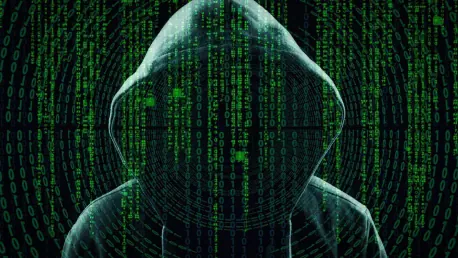The second half of 2024 was a tumultuous period for the cybersecurity industry, marked by significant incidents, technological advancements, and legislative actions. The landscape of cybersecurity continues to evolve rapidly, driven by massive data breaches, groundbreaking developments in quantum computing, and the interplay between privacy and security concerns. Notably, the period from July to December 2024 highlighted persistent vulnerabilities and the urgent need for more robust protective measures. This article delves into the key events and trends that shaped the cybersecurity domain in the latter half of the year, providing a comprehensive overview of the challenges and advances that defined this critical period.
Major Data Breaches and Ransomware Attacks
July and August of 2024 were rife with some of the most significant data breaches of the year, severely impacting major corporations and healthcare providers. In July, AT&T made headlines by disclosing a massive data breach that affected nearly all of its customers, as well as those who used services reliant on AT&T’s network. Despite AT&T paying $300,000 in an effort to have the stolen data allegedly deleted, skepticism remained rampant about whether this was the only copy of the data. Affected customers criticized AT&T’s decision not to offer credit monitoring, instead providing only privacy protection advice, which many regarded as insufficient given the magnitude of the breach.
The wave of cyberattacks continued into August, with McLaren Health Care experiencing its second ransomware attack in two years. This attack caused notable disruption and underscored the vulnerabilities within the healthcare sector. Similarly, United Healthcare announced a data breach that impacted 100 million people, making it the largest healthcare breach on record. These incidents shone a spotlight on the critical need for more stringent data security measures and the growing threat of ransomware, which has increasingly targeted sensitive industries like healthcare. Collectively, these breaches emphasized that large-scale vulnerabilities persist, showcasing that despite ongoing efforts, more robust security protocols are essential to protect sensitive information.
Technological Failures and Their Impacts
The cybersecurity industry faced significant hurdles due to technological failures that had widespread repercussions. In July, an unfortunate update to the Crowdstrike security platform led to a major internet outage that disrupted various industries globally. This technical blunder not only caused significant financial losses for countless businesses but also temporarily plummeted Crowdstrike’s stock. The incident highlighted the potentially catastrophic consequences of seemingly minor software issues and raised concerns about the reliability of current security platforms in preventing such disruptions.
Adding to the industry’s turbulence, Intel Corporation announced a significant reduction of its workforce at the end of July, eliminating 15% of its jobs, equivalent to 15,000 positions. The announcement, vaguely attributed to undisclosed reasons, sparked widespread concern about the tech giant’s capability to effectively address cybersecurity challenges moving forward. The job cuts were seen as potentially weakening Intel’s capacity to innovate and respond to the rapidly evolving cyber threat landscape. Together, these events underscored the intricate balance between technological advancements and the unforeseen repercussions of errors, emphasizing the necessity for meticulous oversight and continuous improvement in cybersecurity infrastructures.
Advancements in Quantum Computing and Encryption
Despite the numerous challenges, the latter half of 2024 also saw significant technological advancements, particularly in the realm of quantum computing and encryption. In mid-August, the National Institute of Standards and Technology (NIST) announced the development of new encryption algorithms specifically designed to resist cyberattacks from quantum computers. These advancements addressed growing concerns about the vulnerability of current encryption methods to the powerful computational abilities of quantum technology. The introduction of these algorithms marked a proactive step towards securing data against future quantum threats, signaling a readiness to confront the evolving cybersecurity landscape.
In a notable development in December, Google announced the creation of its “Willow” quantum chip. This groundbreaking chip achieved a rapid computational feat that outpaced the world’s fastest supercomputer, exemplifying the accelerating pace of quantum advancements. The impressive capabilities of the “Willow” chip underscored the urgent need for parallel developments in encryption methods to safeguard data effectively. As quantum computing technology continues to evolve, the advancements in encryption are crucial for ensuring that sensitive information remains protected against emerging threats. Collectively, these advancements reflect a forward-looking approach in the cybersecurity industry, preparing for the inevitable challenges posed by the next generation of computing technologies.
Legislative Actions and Legal Disputes
The second half of 2024 was also marked by significant legislative actions and legal disputes that had implications for the cybersecurity domain. In a high-profile incident in August, Telegram CEO Pavel Durov was arrested in France over the app’s moderation policies. The arrest sparked intense debates about platform responsibility versus user privacy, bringing to the fore the ongoing tension between these two critical aspects of cybersecurity. Following the arrest, Telegram agreed to share some user data with law enforcement for individuals violating its terms of service, showcasing the delicate balance between ensuring security and respecting user privacy.
October saw a legal battle between Crowdstrike and Delta Airlines over the liabilities related to the July update incident that caused a major internet outage. Both parties blamed each other for the financial losses incurred, reflecting the complexities involved in attributing damages in multi-faceted cyber incidents. The legal disputes highlighted the intricate interplay between corporate accountability and technological failures, underscoring the challenges of ensuring cybersecurity in an increasingly interconnected world. These legislative actions and legal battles underscored the ongoing struggle to balance privacy needs with security imperatives, illustrating the multifaceted nature of cybersecurity challenges.
Cyber Warfare and Physical Harm
September witnessed a stark reminder of the devastating potential of cyber warfare, with a cyberattack in Lebanon resulting in significant physical harm. The attack involved paging and walkie-talkie devices equipped with explosives, which were detonated remotely, causing numerous casualties. This catastrophic event underscored the horrifying reality of cyber warfare and highlighted its ability to inflict physical harm on a large scale. The Lebanon attacks illustrated the rise of cyber threats that transcend the digital realm, posing tangible dangers to human lives and urging a reevaluation of cybersecurity strategies to preempt such threats.
The devastating impact of the Lebanon attacks emphasized the escalating severity of cyber threats and the urgent need for comprehensive cybersecurity measures to address these evolving challenges. The incident exemplified the lethal potential of integrating cyber capabilities with physical harm, pushing the boundaries of what is considered traditional warfare. As cyber warfare continues to evolve, the necessity for adaptive and robust cybersecurity frameworks becomes increasingly apparent, prompting governments and organizations to bolster their defenses against such unprecedented threats. The Lebanon attacks highlighted the critical imperative to enhance cybersecurity strategies, ensuring that both digital and physical infrastructures are safeguarded against emerging dangers.
AI Developments and Their Implications
Throughout 2024, Artificial Intelligence (AI) continued to develop, presenting both opportunities and challenges in the realm of cybersecurity. AI’s dual nature was evident in various instances, ranging from harmful to beneficial applications. One notable harmful instance involved AI-generated explicit imagery leading to a school shutdown. This incident highlighted AI’s potential to create disruptive and damaging content, posing significant cybersecurity risks. Conversely, AI also played a beneficial role in aiding medical research, showcasing its capacity to contribute positively to societal advancements. These developments underscored AI’s double-edged nature, offering both risks and opportunities for cybersecurity.
The advancements in AI underscored the necessity for a balanced approach in harnessing its capabilities while mitigating associated risks. As AI technology continues to evolve, its applications in cybersecurity must be carefully monitored to ensure that harmful uses are minimized, and beneficial uses are maximized. These instances highlighted the importance of establishing robust ethical guidelines and regulatory frameworks to govern AI’s deployment in cybersecurity. The dual impact of AI on cybersecurity reinforced the need for continuous vigilance, innovation, and responsible use of this transformative technology to navigate its complexities effectively.
Espionage and National Security
The second half of 2024 was a particularly turbulent time for the cybersecurity sector, characterized by major incidents, emerging technologies, and new legislative measures. The cybersecurity landscape is continually evolving, driven by substantial data breaches, innovations in quantum computing, and the delicate balance between privacy and security concerns. From July to December 2024, the period was marked by recurring vulnerabilities and highlighted the urgent necessity for more effective protective measures.
In the final months of 2024, several key events and trends reshaped the cybersecurity domain. The rise of quantum computing brought both opportunities and new challenges, as its potential to break current encryption methods became more evident. High-profile data breaches continued to expose significant weaknesses in existing cybersecurity infrastructures, compelling organizations to re-evaluate their security protocols. Additionally, new legislative actions aimed at enhancing data protection and privacy were enacted, reflecting the growing awareness of cyber threats.
Overall, this article examines the pivotal moments and trends in cybersecurity during this critical period, offering a thorough overview of the hurdles and progress made in the field. The need for innovative and resilient security measures remains paramount as the landscape grows increasingly complex and interconnected.









